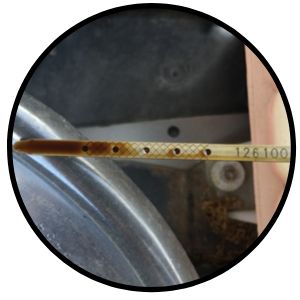The engine burning oil is one of the most common problems that a vehicle can encounter, particularly one with high mileage. If your Suzuki XL-7 is burning oil it is typically caused by piston rings or valve guides.
How Much Oil Consumption is Normal?
Most auto manufacturers are hesitant to tell you how much oil that they would expect their vehicles to burn. As an engine ages, it is completely normal for it to start requiring a quart or two between oil changes.
It’s when you are putting in a quart every 1 or 2 thousand miles that you are really consuming oil.
Suzuki XL-7: Burning Oil Symptoms
Here are the most common symptoms of burning oil:
1. Blue Smoke
The most obvious and a telltale sign that your XL-7 is burning oil is blue smoke. Blue smoke indicates that oil has made its way to the combustion chamber.
It is then burned with the gasoline and tints the exhaust blue. Your exhaust will look more like a two stroke engine if it’s bad enough. Here’s more on blue exhaust smoke. Blue smoke is proof positive that your XL-7 is burning oil.
2. Low Oil Level
This is very well the reason that you have come to this page. But, a low oil level does not necessarily indicate that you are burning oil. It could be leaking out of the engine.
If you normally park your XL-7 in one place, look under it and see if there is any fluid under the engine. This could indicate that the oil is exiting through the seals, and not through the combustion chamber.
3. Oil on Spark Plugs
If oil is slipping past the valve seals, it can make its way onto the spark plugs. When this happens your XL-7 is likely to start running worse and misfiring, as the spark plug will no longer be able to achieve a clean spark. Here’s more on diagnosing oil on your spark plugs.
4. Smell
Burning oil has its own smell. While exhaust never smell pleasant, it’ll have a distinct burnt smell to it. You’ll usually smell the burnt oil before you’ll see blue smoke from the exhaust.
Burning Oil Causes: Suzuki XL-7
Here are some of the more common causes that your XL-7 would start to burn oil:
Piston Rings
The gap between you cylinder wall and the piston is measured in hundredths of an inch. Your XL-7’s piston rings further close that gap and keep oil from leaving the crankcase and finding its way to the combustion chamber.
When they fail your XL-7 will begin to burn oil and get the telltale blue smoke issue.
Valve Seal
The valves in your XL-7’s engine are responsible for letting air and fuel into the combustion chamber, closing when the spark plug fires, and opening again to let out the exhaust. When they go bad, oil will be allowed into the combustion chamber and there will be blue smoke.
Valve stem seals will let oil into the combustion chamber if they are:
- worn out
- cracked
- broken
PCV Valve
The PCV system takes the pressure from your crankcase and safely relieves it. It sends it back to the intake system to be recycled. Take a look at this great video from Ratchets and Wrenches on how to diagnose a bad PCV Valve.
Valve Seal or Piston Rings?
OK, you have blue exhaust smoke and you are fairly confident that it’s your valve seals or piston rings causing your Suzuki XL-7 to burn oil. How do you tell which one is bad?
If your valve seals are bad, it’ll always manifest itself the most after your XL-7 has been sitting for a while. Say it sat overnight. During that time plenty of oil will leak down from the top of the head, through the valve seals, and coat the combustion chamber. Once you fire up the engine, that oil will quickly be burnt away causing a huge plume of smoke.
Pull a spark plug and see if any oil is on it. The oil is not going to leak up from the crankcase overnight. But, it would leak down from a valve onto the plug. That’s a pretty good indication that you are looking at valve seals.
A mechanic can do a pressure test and determine whether the valve seals or piston rings are causing the burning oil problem.
Conclusion: XL-7 Burning Oil
Good luck diagnosing why your Suzuki XL-7 is burning oil. If there is anything that you would like to add, please feel free to drop a comment below.


